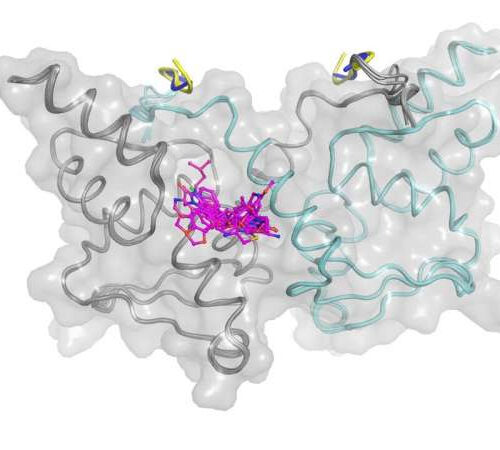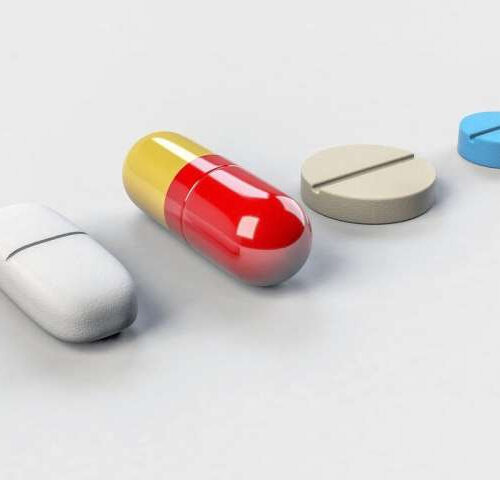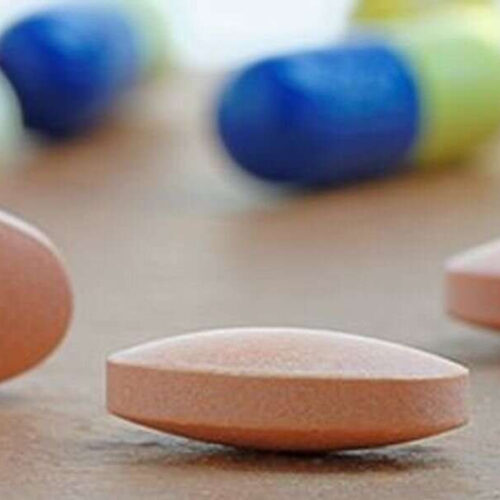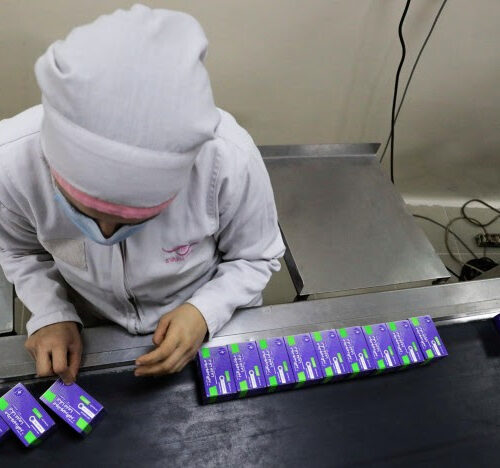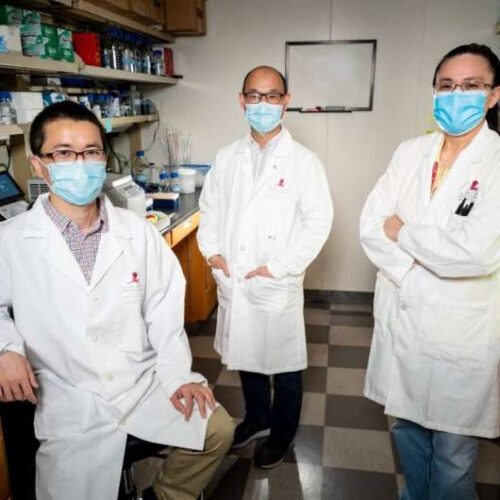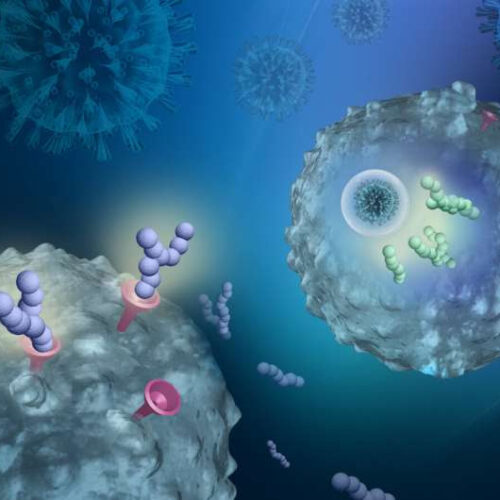by Weizmann Institute of Science Credit: EMBO Molecular Medicine (2024). DOI: 10.1038/s44321-023-00020-yWeizmann Institute scientists have discovered two small molecules that can cross the blood-brain barrier in mice, slowing and even reversing the effects of Huntington’s, which is incurable. The human brain is a well-guarded control center. Its system of blood vessels is surrounded by a densely...
Tag: <span>new drugs</span>
New Drugs in Primary Care: Lessons Learned From COVID-19
Christos Evangelou, MSc, PhD May 05, 2023 SAN DIEGO – A COVID-19 combination antiviral is the most important new drug primary care physicians have prescribed in recent years – plus it has helped keep many patients out of the hospital, according to a presenter at the annual meeting of the American College of Physicians. Nirmatrelvir-ritonavir was granted emergency use...
Potential new series of drugs targeting cancer-driving protein BCL6
by Institute of Cancer Research The BCL6 BTB domain dimer (in grey/green) and compound hits in pink, superimposed on each other in the main compound binding site. Credit: Dr Rob van Montfort lab / ICR Scientists have revealed details of the discovery of new inhibitors of the BCL6 protein, which is involved in driving several...
New drugs with high abuse potential more likely to be approved, go to market to treat pain
by American Society of Anesthesiologists Credit: CC0 Public Domain “Despite the prevalence and societal costs of pain in the United States, investment in pain medication development is low, due in part to poor understanding of the probability of successful development of such medications,” said the authors of a study published online first in Anesthesiology. “The opioid...
Increased flexibility seen in preapproval evidence for new drugs
The characteristics of acceptable preapproval evidence were more flexible for novel drugs approved by the U.S. Food and Drug Administration in 2020, according to a research letter published online May 17 in JAMA Network Open. Mayookha Mitra-Majumdar, M.P.H., from the Brigham and Women’s Hospital and Harvard Medical School in Boston, and colleagues characterized the state of...
Hundreds of COVID trials could provide a deluge of new drugs
Heidi Ledford A lab technician works on the production of molnupiravir, an oral antiviral drug that some countries have authorized for use against COVID-19. Credit: Amr Abdallah Dalsh/Reuters/Alamy It takes Lawrence Tabak about 15 minutes to rattle off all the potential COVID-19 treatments being tested in the clinical trial programme he oversees: a lengthy, tongue-twisting...
Closing the gate on manganese could open doors to new drugs to treat pneumonia
DOE/SLAC NATIONAL ACCELERATOR LABORATORY Most of us take for granted that our kids will make it to their fifth birthday, but nearly half a million children worldwide who are infected by Streptococcus pneumoniae bacteria each year never make it that far. Spread in droplets when we cough or sneeze, the bacteria can cause deadly pneumonia, meningitis and...
New drugs may kill and limit reproduction of bowel cancer cells
by Hudson Institute of Medical Research Credit: Dr. Ruby Dawson Drugs that are being trialed to treat leukemia could also be used to fight bowel cancer after a breakthrough by Hudson Institute of Medical Research scientists. In a world-first, researchers found that the drugs could potentially be used to fight bowel cancer, using Nobel Prize-winning genetic screening technology CRISPR. The researchers were...
Structure of enzyme that causes Parkinson’s promises pathways to new drugs
by Michael Sheffield, St. Jude Children’s Research Hospital From left: Hanwen Zhu, Ph.D.; Ji Sun, Ph.D.; and Patricia Hixson, Ph.D., all of St. Jude Structural Biology, have determined the detailed structure of an enzyme whose mutated forms are known to cause Parkinson’s disease. Credit: St. Jude Children’s Research Hospital Structural biologists at St. Jude Children’s Research Hospital have determined the...
New drugs to fight COVID-19 developed
by QIMR Berghofer Medical Research Institute The illustration depicts two peptide drugs to target SARS-CoV-2. The SARS-CoV-2 spike protein uses the ACE2 receptor (pink funnel) to bind to and invade cells. With the first peptide drug (purple balls), the virus latches onto the cloaking peptides (purple balls, which protect ACE2), which they mistake for ACE2 receptor on...
- 1
- 2


